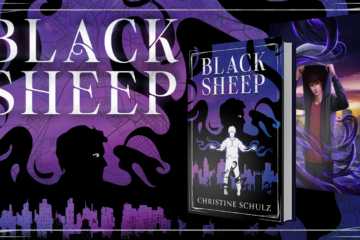I’ve heard countless times from authors that the best stories you can write are often based on your own personal experiences. Thankfully, my life has been pretty uneventful when it comes to shoot outs, fist fights, life threatening injuries, and magic fireballs being launched at me by evil villains. But I can claim to have done a multitude of other interesting things in the name of research.
I remember very clearly the first time I shot a gun. I was terrified, which is exactly what you don’t want when shooting a gun. Unsteady hands, uncertainty, and fear can lead to a slew of mistakes that can get you, or someone else, seriously injured. I kept asking myself what would happen if I dropped the gun? Would it accidentally fire off a bullet? What if it jammed? Am I going to completely miss and injure myself? I stood there nervously until I finally drummed up the courage to pull the trigger.
Bang. The bullet exploded through the air so fast the whole thing was over before I even realized what happened.
Most authors write about the sound of a gunshot, but what I remembered most was an acrid smell infiltrating my nose – like burning fireworks. The slight, bitter taste of the sulfuric smoke stuck to the back of my tongue. My hands vibrated. My body felt warm. The adrenaline rushed through me and made me wonder if I should go check my pants. But after that, the feeling faded and had a newfound respect for those who have trained for years with these weapons. I had trouble hitting anywhere on the target standing still. How could anyone effectively shoot a gun in a fight while they were running, jumping, and dodging other bullets flying at them?
I’ve participated in many other fun activities to improve my writing. Archery became a new favorite hobby of mine. I’ve also taken fencing lessons to learn about sword fighting. I went indoor skydiving (I’m too chicken to do it for real) to experience what it feels like to be weightless and to fall. Axe throwing? Turns out I have an inner lumberjack in me. Perhaps the craziest, but most educational, thing I’ve ever done was offer my body to the self defense instructor for demonstration.
I’d like to preface by saying I am extremely flexible. My arms and legs can move into positions no normal body should be able to. I would have done well as a contortionist in the circus. The instructor was also not intentionally trying to harm me, but the awkward positions were no doubt uncomfortable and even though he wasn’t using his full force, I could clearly imagine the discomfort amplifying into intense pain if someone were to ever actually use these maneuvers in a real life situation.
The instructor started off by explaining what to do when your hands are tied or held behind your back. I simply swung them over my head so they were in front of me. Sidestepping around him, I dropped my tied hands around his neck and motioned like I would strangle him. Effective, but he wasn’t impressed since no normal person could use their arms to jump rope their body.
We switched positions. I was behind him, attempting to secure his wrists with a piece of rope. Out of nowhere his heel came down on my foot and he shoved all six-foot-three of his solid muscled body backwards, pinning me against the wall and pretending to drive an elbow into my gut. Not fair, if you asked me. I was a five-foot-three slightly overweight and out of shape female. Nevertheless, I understood how effective his attack could be. The first reaction when being attacked is often panic, flailing hands about or writhing back and forth to wiggle free from a hold. Many victims don’t even attempt to fight back.
Next on the list. What happens if someone grabs your wrist? He slapped a hand on top of mine, swooping the other one under and around, twisting my arm until he was gripping my wrist. Being overly flexible, my shoulder had rotated in the complete opposite direction. My straightened arm, with my elbow nudging into my shoulder blade, secured flat against my back. I still remember the cringing and gasps of horror from the group of women at the unsightly vision it must have been. I could feel my shoulder stretching, but other than being in an awkward position, I was in no pain.
Let’s try something else. I swung an arm over his shoulder. He grabbed my wrist, ducked under my arm, and again pinned it flat across my back. This time he used his foot to push against the back of my knee to bring me to the floor.
What if someone grabs your hair? He dipped his head, turning to hook his arm under mine, pulling it back once again and pushing me to the floor.
I think you can get where I’m going with this.
He demonstrated, using me as his test subject, a variety of other ways to attack. It’s surprisingly painful when you press down forcefully on someone’s fingernails with your own. Don’t have a weapon? Try using a car key. (Thankfully, he didn’t demonstrate that one).
I had a couple of bruises after that class, but I took away a lot of useful information from it. For one, I have a high pain tolerance thanks to my flexibility. But the most helpful part of that day was understanding how a scrappy character with limited strength and skills might overcome a more powerful opponent. In my story, How to Hunt a Menacing Magical Shadow, my main character Adrian is a short, often powerless troublemaker who prefers cupcakes to the gym. He has to find creative and unconventional ways to get out of challenging situations and many of the maneuvers I learned were just perfect to accomplish that.
How far would you go for the sake of research? If you have the opportunity, I highly suggest you find something relevant to your writing and try it first hand! The valuable experience you’ll learn from these situations can deepen your writing skills, allowing you to completely immerse yourself into your story, better describing your characters feelings and emotions as well as understanding what your character can realistically accomplish and how they can effectively pull it off.


